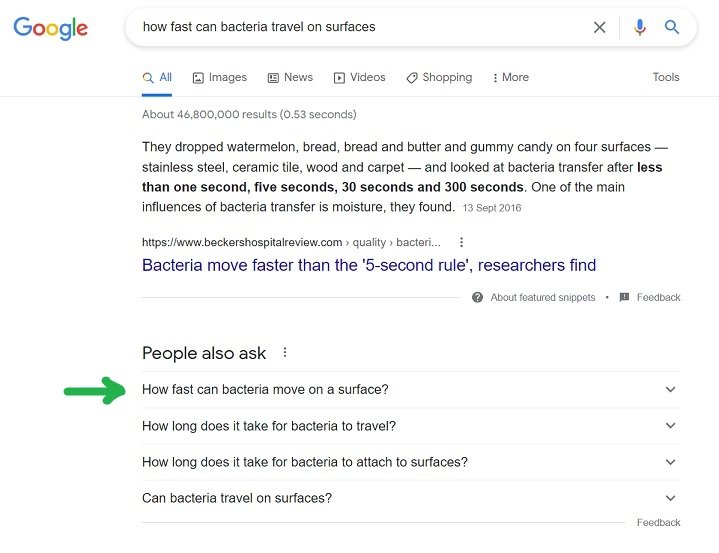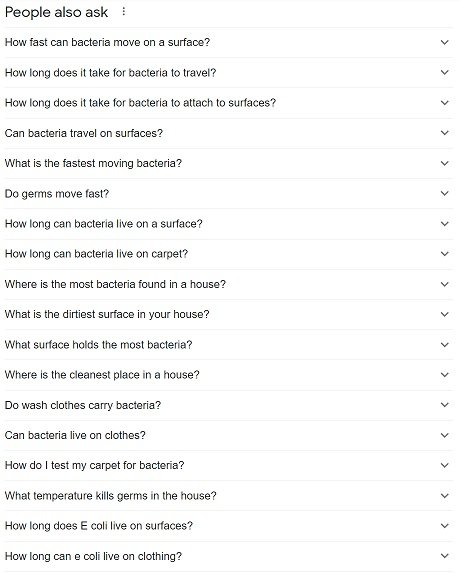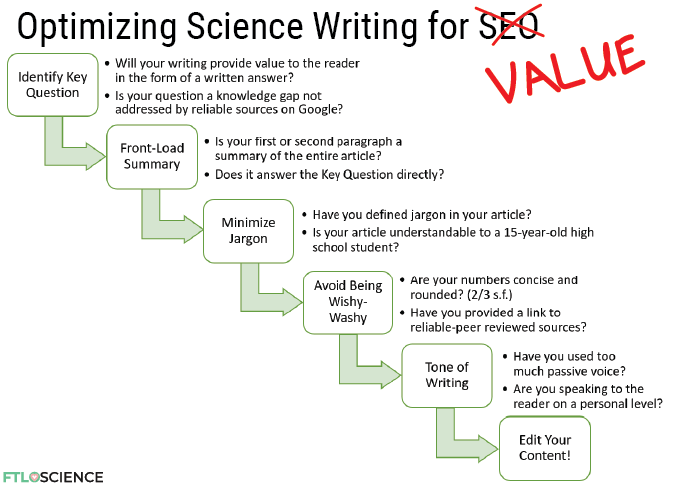Let’s face it; we scientists aren’t the best at writing for a general audience. Science communication (SciComm) might be difficult, but driving traffic to our article or blog post is easy! We just need to follow a few simple steps to show Google the value of our content. This guide is for science writers who want to improve SEO without needing special software and paid tools.
Search Engine Optimization (SEO) is not a substitute for valuable content. This is especially true in science communication, where scientific concepts are explained to non-scientists. However, there are ways to tell search engines that your writing provides value to readers. First, identify Key Questions instead of keywords (without using special SEO tools). Next, front load your content. Avoid jargon and wishy-washy facts and figures. Finally, write fresh and original content with flavor.
SEO is Dead in 2022 (But SciComm Isn’t)
Before we get into keyword research, I must tell you a secret about SEO. Despite the advice you receive on the internet about SEO, most of these tips and paid services are gimmicks. This wasn’t the case in times past; backlinks, keyword density and guest blogging were once used to rank pages. In 2022, these SEO ‘strategies’ are mostly redundant as search engines upgrade their algorithms.
Why? Because search engines like Google prioritize one thing—to provide readers with VALUE. And for that, there’s no substitute for original content packed with reliable information, something that science communication (SciComm) brings to the table! That said, there are SEO strategies that signal to these algorithms that you have the content they want.
How do I know? I’ve been a science writer since 2017; for the last five years, I have tried several SEO tools and strategies to help my articles rank higher. While some were top performers in the search rankings, most were complete bombs. As a scientist by training, I went looking for what worked in driving search engine traffic. This guide is the result of my research, a resource to help you sidestep that SEO rabbit hole.
What Science Content Should I Write?
Identifying Key Questions
Of course, you can’t write content on a whim and expect it to rank on the front page of Google results. There are so many articles written on broad topics that any new content (even if it addresses the subject exceptionally well) is unlikely to make it to the front page of results. So how do you decide what to write?
Have you ever asked Google for something you were dying to know, like ‘how can I implement 5S in my lab?’ but didn’t get a satisfactory or directly related answer? These are gaps in Google’s knowledge (*gasp* I know), which you can take advantage of by directly addressing the question within your article or blog post.
How does this provide value? When people search Google, they are seeking answers to a question. Sometimes, Google can offer them the solution. But there’s only so much content on the internet, and there are an infinite number of questions we can ask! Search algorithms love it when they come across answers that directly address a question for which there is a gap.
Gaps related to your field of research/expertise are fantastic because you’ll be familiar with the content. For example, if you’re a microbiologist, you might write something that answers the Key Question, ‘how fast can bacteria travel on surfaces?’ If you’re a materials scientist, your topic might be the differences between diamonds and zircons.
Ask Google for Suggestions
If you can’t think of a specific topic, you don’t need to pay for so-called keyword analysis SEO tools—all you need is Google!
Let’s go back to the example of ‘how fast can bacteria travel on surfaces?’ If we Google this term and look under the ‘People also ask’ section, Google literally tells us what people search for.

You can browse this section to look for Key Questions that you believe you can answer better, then provide your response as an article. The best part is that as you open more dropdowns, the more suggestions Google gives you. No more wracking your brains for writing ideas!

Another way to find topics to write about is to scroll to the bottom of the search page, where you’ll find the related searches section. You’ve now identified what people are searching for without the need for special SEO tools. By directly answering these Key Questions with your writing, you’re creating VALUE for readers, which Google loves more than any SEO shortcut.
Optimizing for SEO in Science Writing
Reader Behavior Affects Search Rankings
Now that you know what to write about, it’s all about how you write it.
Search engines don’t read everything you write (sorry). Instead, they rate your writing based on reader behavior and change your rankings on the search pages accordingly. If readers click on your webpage and immediately return to the results page, Google will deduct its ranking score.
If your readers stick around and explore your site, or close the tab after reading your page (signaling to Google that they got exactly what they need), your site will climb the search results. SEO isn’t rocket science (unless, of course, that’s what you’re writing about).
Save (Your Readers) Time by Front-Loading
Okay, it’s cliché, but time is important. The reader’s time that is. With hundreds of webpages like yours, if the reader can’t extract the information they need quickly, I promise you they will go back to the search results in a flash.
So don’t hide your valuable content behind walls of text, expecting your readers to go digging for treasure! Front-load your writing by directly answering the Key Question within the article’s first two paragraphs. Below is an example of a summary from one of our articles that ranks in the top 3 Google results for multiple queries:

In terms of SEO, a front-loaded summary works like an abstract of a journal article. If readers are satisfied with the results (the information in the summary), great! If curious readers are interested in the rest of the article after reading the summary, even better! By catering to both types of readers, you’ll increase the value of your science writing in the eyes of the algorithms.
Keep Jargon to a Minimum
There’s nothing worse than reading a journal article from another field and having to search for the meaning of an obscure word or phrase (or worse, acronyms). That’s how readers feel when we bring our academic publishing habits to science communication; it’s a turn-off.
Like in front-loading, if the reader can’t extract value from your content without the frustration of Googling for definitions after every other sentence—guess what? Poof! They’re gone, taking your search rankings with them. Sometimes jargon is unavoidable, in which case we can help the reader by providing a simple description in brackets.
How do we tell what jargon is? We can use some terms without defining them, such as atoms, molecules, elements, cells, bacteria, etc. Play it safe by assuming that your readers have the scientific knowledge of a 15-year-old high school student.
Avoid Being Wishy-Washy
Wish-wash in science writing isn’t as bad as jargon, but it makes you seem less confident in your work. For example, we come across a source that says fossil fuels will run out in 30-70 years. A range of values is commonly reported in scientific articles because uncertainties must be presented along with the data for comparison.
However, quoting ranges in our science writing make it seem like we’re indecisive. Is it 30? Is it 70? Our writing would look more authoritative and VALUABLE if we referenced the average: 50 years.
We should also make a habit of rounding numbers. Depending on the size of the number and the context, we usually want to keep our numbers to 2 or 3 significant values. Nobody is going to stage a protest if round 152.2 million tons to 150 million tons.
This doesn’t mean you should twist the scientific evidence to fit your narrative (it’s not pseudoscience communication). While it’s acceptable to round numbers, you should also provide their source in a hyperlink or at the end of the article. By referencing peer-reviewed articles, you’re already streets ahead of news and media content when it comes to reliability.
It’s Not About You (Except it is)
The points discussed in this SEO guide so far make it seem like your writing isn’t about you. And it still isn’t—if you want to optimize for search engines, your readers are everything. But the irony is that readers don’t want to be bored to death by passive voice and objective science communication!
As scientists, we naturally tend to talk about things in a passive voice, distancing ourselves from the content to appear more objective: 50 ml of this was added to that, and the reaction proceeded; a human gene was inserted into the bacteria DNA, which expressed the protein.
As science writers, we need to use active voice, which engages the reader and makes us sound more confident in our content: they added 50 ml of this to kickstart the reaction; we inserted human genes into the bacteria’s DNA to express the protein.
Ultimately, people want to hear from the author as a friend or a neighbor, not as a textbook. We need to remove ourselves from an expert’s position, while being aware of what the reader perceives as value. That’s what science communication is all about!
Don’t Hit Publish Without Editing!
The final point in this guide: never publish your content before editing! You can get away with typos, but lousy structure and readability will haunt your science writing when search engine algorithms pick up on your article’s poor user experience..
Self-editing is fine, but it takes much training to spot your own mistakes reliably. If you’re serious about science writing, it’s a good idea to hire a specialized editor to help. Getting tailored feedback is the quickest way to improve your science writing content.
Otherwise, a friend or family member will work too. It’s best to choose someone who isn’t familiar with your research and can quickly point out if your writing contains too much jargon and complexity.
SEO Flowchart for Science Writers
I hope you’ve enjoyed this SEO guide for science writers, which is really about showing search engines that you are creating value for your readers. By creating valuable content, you don’t need to worry about algorithm updates screwing up your rankings. If anything, your search engine traffic will increase as Google improves on its robots beyond 2022.
If this advice has been helpful, share it with your coworkers and the science writing community. The demand for quality, referenced science content is HUGE! We need all the science writers we can get to fill this knowledge gap through SciComm.
Thank you for reading till the end! As a reward, I’ll leave you with this flowchart that ensures you don’t miss out on any of the points mentioned in this SEO guide.

About the Author

Sean is a consultant for clients in the pharmaceutical industry and is an associate lecturer at La Trobe University, where unfortunate undergrads are subject to his ramblings on chemistry and pharmacology.




